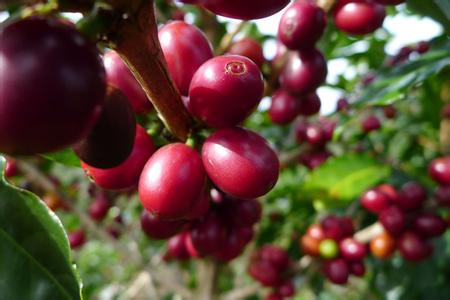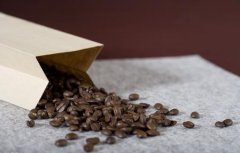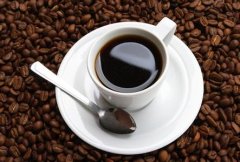Baking can be divided into three stages: drying, high temperature decomposition and cooling.

Drying
In the early stage of baking, the raw beans begin to absorb heat and the internal water gradually evaporates. At this time, the color gradually changed from turquoise to yellow or light brown, the silver film began to fall off, and a faint smell of grass could be smelled. The main function of this stage is to remove moisture, which accounts for about half of the baking time. Because water is a good thermal conductor, it helps to bake the internal substance of coffee beans. Therefore, although the aim is to remove water, the baker will make good use of the temperature of the water and properly control it so that it will not evaporate too fast. it is usually best to control the water to reach the boiling point in ten minutes, when the internal material is fully heated and the water begins to evaporate and spill over to the outside of the coffee beans.
High temperature decomposition
When baked to about 160 degrees Celsius, the water in the beans will evaporate into gas. At this time, the interior of the raw bean changed from endothermic (Endothermic) to exothermic (Exdothermic) and the first burst sound (Crack) appeared. After the bursting sound, it turns to endothermic. At this time, the pressure inside the coffee bean is extremely high, reaching 25 atmospheric pressure. High temperature and pressure began to deconstruct the original tissue to form new compounds, resulting in the taste and taste of coffee; at about 190 degrees Celsius, the transition between endothermic and exothermic took place again. High temperature cracking continued to occur, and the coffee beans changed from brown to dark brown.
Cooling
Coffee must be cooled immediately after roasting, quickly stop the pyrolysis at high temperature and lock the flavor. Otherwise, the high temperature in the beans will continue to act and will burn off the aromatic substances. There are two ways of cooling: air-cooled and water-cooled. Air cooling is the rapid cooling of coffee beans in three to five minutes with a lot of cold air. In the field of professional baking, large roasters are equipped with a tray with a rotatable driving arm; when the baking is completed, the beans are automatically fed into the tray, and the fan at the bottom of the tray is immediately activated to blow air-conditioning. and the pushing arm stirs the coffee beans for cooling. Although the air-cooled type is slow, it is clean and non-polluting, and it can retain the aroma of coffee, so it is used by selected coffee professionals. Water-cooled is to spray a layer of water mist on the surface of coffee beans to make the temperature drop rapidly. As the amount of water sprayed is very important, it requires precise calculation and control, and will increase the weight of baked beans, which is generally used in large-scale commercial baking.
Important Notice :
前街咖啡 FrontStreet Coffee has moved to new addredd:
FrontStreet Coffee Address: 315,Donghua East Road,GuangZhou
Tel:020 38364473
- Prev

Definition of roasting of coffee beans General knowledge of roasting of fine coffee
The key to the popularity of roasted coffee lies in the aroma and taste of roasted coffee, because the coffee bean itself does not have any special taste. Baking is to change and reorganize the substances inside the raw beans to form a new structure and become people's favorite drink with a strong and mellow flavor. The roasting of coffee is a kind of high temperature coking (Pyrol
- Next

The roasting degree of coffee beans can be divided into six categories.
Light baking (Light Roasts), cinnamon (Cinnamon), half-city style (Half City), New England style (New England). This kind of baking is only used for absolutely high-quality, fine or highland-grown Arabica coffee beans, mainly for the identification and tasting of coffee beans, generally not on the finished products sold in the market. Cinnamon is so called because its baked color is very similar.
Related
- Beginners will see the "Coffee pull flower" guide!
- What is the difference between ice blog purified milk and ordinary milk coffee?
- Why is the Philippines the largest producer of crops in Liberia?
- For coffee extraction, should the fine powder be retained?
- How does extracted espresso fill pressed powder? How much strength does it take to press the powder?
- How to make jasmine cold extract coffee? Is the jasmine + latte good?
- Will this little toy really make the coffee taste better? How does Lily Drip affect coffee extraction?
- Will the action of slapping the filter cup also affect coffee extraction?
- What's the difference between powder-to-water ratio and powder-to-liquid ratio?
- What is the Ethiopian local species? What does it have to do with Heirloom native species?

